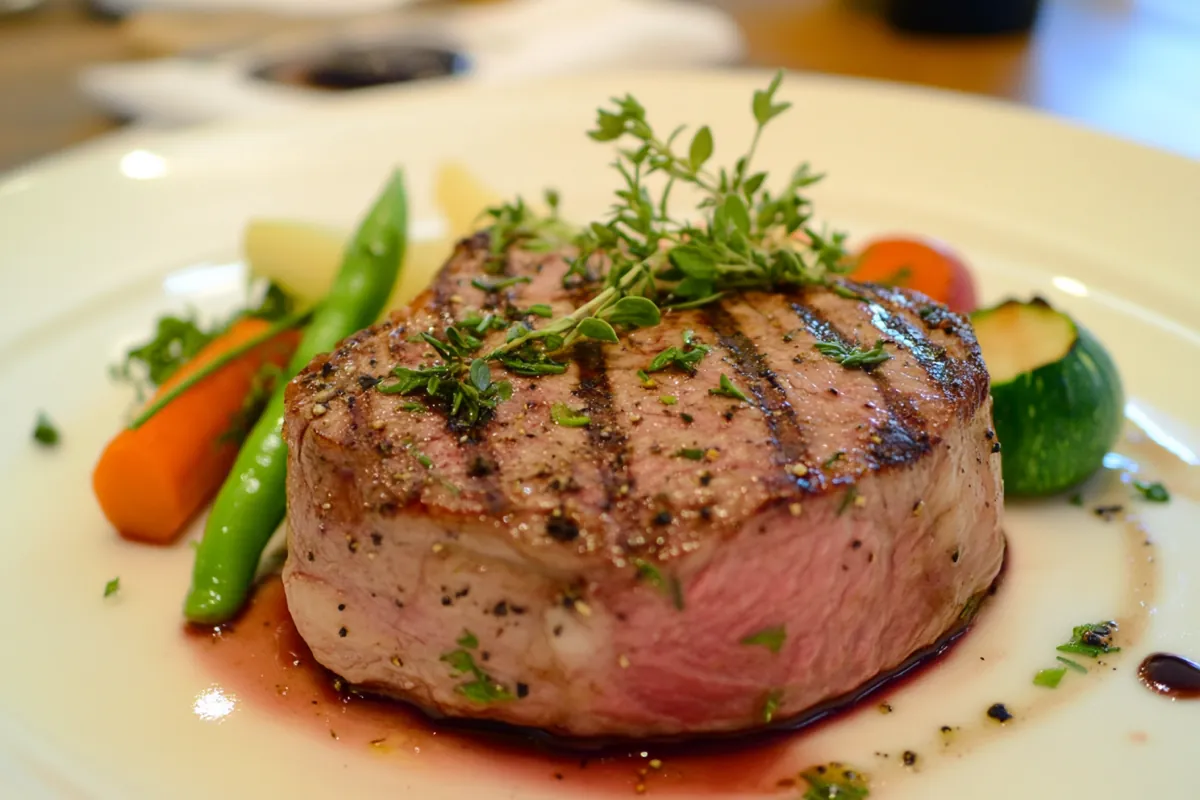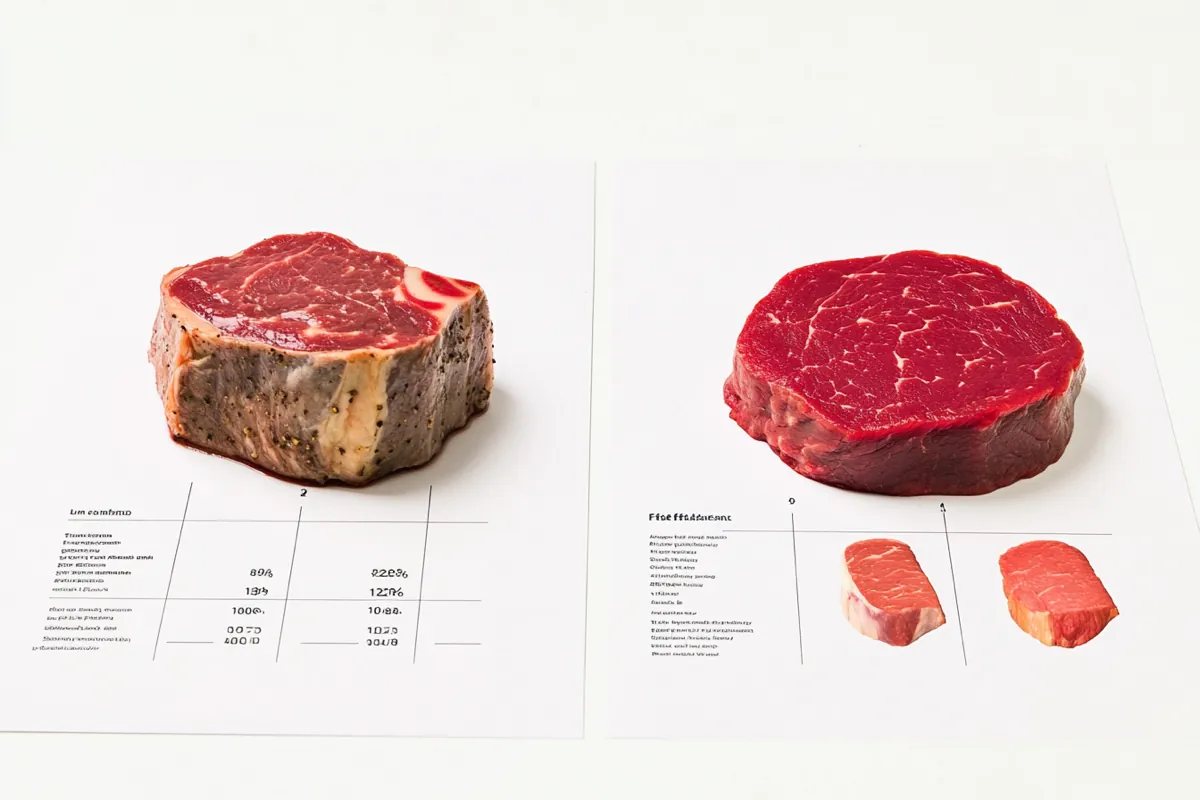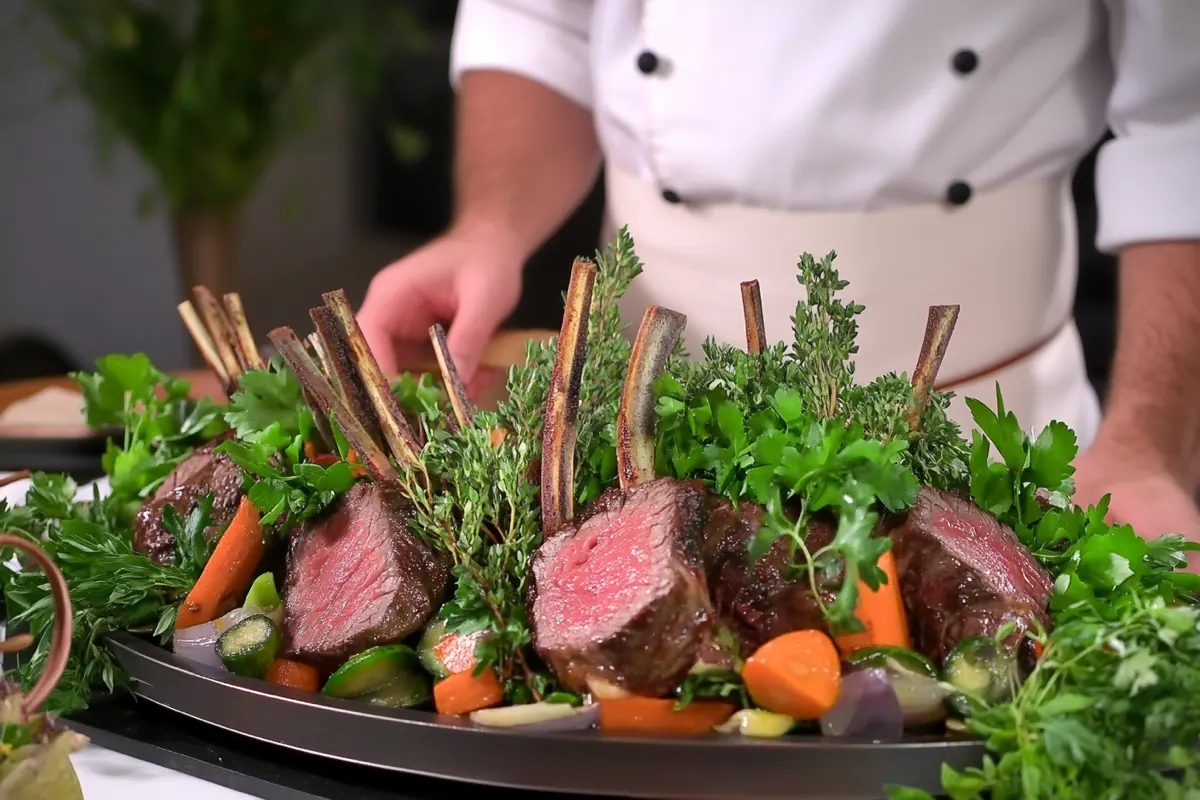When it comes to beef, two cuts often spark debate among enthusiasts and chefs alike: beef tenderloin and filet mignon. Both are prized for their tenderness and flavor, but they have distinct characteristics that set them apart. In this article, we will explore the intricate differences and similarities between these two cuts, delve into their origins, and discuss their culinary uses. By the end, you will have a clearer understanding of which cut might be best for your next meal.
Table of Contents
Introduction to Beef Cuts
To appreciate the differences between beef tenderloin vs filet mignon, it helps to understand the broader category of beef cuts. The cow is a complex animal, and various cuts come from different sections of its body. Each cut has unique flavor profiles, textures, and cooking methods.
Overview of Beef Tenderloin
Beef tenderloin is a long, cylindrical muscle located along the spine of the cow. This cut is known for being exceptionally tender due to the lack of connective tissue. Tenderloin is often sold whole or sliced into steaks. It is a favorite for high-end restaurants and home cooks alike who seek a luxurious beef dish.
Overview of Filet Mignon
Filet mignon is actually a smaller portion of the beef tenderloin. When the tenderloin is cut into individual steaks, the most sought-after piece is the filet mignon. This cut is renowned for its rich flavor and buttery texture, making it a popular choice for special occasions.
Anatomy of the Cow: Where Do They Come From?
Understanding the anatomy of the cow is crucial to grasping where beef tenderloin vs filet mignon originate. The cow’s body is divided into several sections, each yielding different cuts of meat.
The Tenderloin Section of the Cow
The tenderloin is located within the loin section, which spans the back of the cow. This area is less exercised than other parts of the animal, contributing to its tenderness. The entire tenderloin can weigh between 4 to 6 pounds, providing ample meat for various dishes.
Location of Filet Mignon in the Tenderloin
Filet mignon is derived from the tapered end of the tenderloin. This section is the most tender part of the cut. Chefs often seek out filet mignon for its exquisite tenderness, which makes it a favorite on fine dining menus.
How Many Filet Mignon in a Tenderloin?
Typically, a whole beef tenderloin can yield about 6 to 8 filet mignon steaks, depending on how thickly they are cut. This means you can create multiple delicious meals from just one tenderloin.
How Many Filet Mignon in a Cow?
Considering the average cow can produce several tenderloins, you can generally expect to find around 20 to 30 filet mignon steaks per cow. This high yield makes filet mignon a popular choice among butchers and chefs.
Characteristics of Beef Tenderloin
The characteristics of beef tenderloin contribute significantly to its popularity. Here, we will explore its texture, flavor, and ideal cooking methods.
Texture and Flavor Profile
The texture of beef tenderloin is incredibly soft, making it easy to cut through. This tenderness is complemented by its mild flavor, which allows it to absorb marinades and seasonings well. When cooked properly, tenderloin can provide a delightful contrast between a crispy exterior and a juicy, pink interior.
Cooking Methods for Beef Tenderloin
There are several effective ways to cook beef tenderloin. Grilling, roasting, and sous vide are popular options. Each method enhances the natural flavors of the meat while ensuring it remains tender. For a detailed guide on preparing beef tenderloin, refer to our ultimate guide to beef tenderloin.

Characteristics of Filet Mignon
Filet mignon stands out not only for its tenderness but also for its unique culinary attributes. Understanding these characteristics can help you appreciate why it’s considered a top-tier cut of beef.
Texture and Flavor Profile
Filet mignon is renowned for its buttery texture, which melts in your mouth. This tenderness is due to the minimal muscle use in the area where the filet is cut. The flavor is also mild, allowing it to pair well with various seasonings and sauces. Many chefs recommend cooking it simply with salt and pepper to highlight its natural taste.
Popular Cooking Techniques for Filet Mignon
Cooking filet mignon requires a delicate touch to preserve its tenderness. Here are some popular methods:
- Grilling: This method adds a smoky flavor and beautiful grill marks. Preheat your grill to high, season the steak, and cook it for about 5-7 minutes on each side for medium-rare.
- Searing: Searing the filet in a hot pan creates a caramelized crust while keeping the inside juicy. Use a cast-iron skillet for the best results.
- Sous Vide: This technique involves vacuum-sealing the filet and cooking it in a water bath at a precise temperature. This ensures perfect doneness and tenderness. For a comprehensive approach, check our guide on sous vide cooking.
Culinary Uses: Beef Tenderloin vs Filet Mignon
Both beef tenderloin vs filet mignon have unique culinary uses, making them favorites in various dishes.
Best Dishes Featuring Beef Tenderloin
Beef tenderloin shines in many recipes due to its versatility. Here are some popular dishes:
- Beef Wellington: This classic dish features tenderloin wrapped in puff pastry, often accompanied by a mushroom duxelles. The combination of flavors is exquisite.
- Roasted Tenderloin: This dish is often seasoned with herbs and roasted to perfection, making it a centerpiece for special occasions.
- Tenderloin Tacos: For a twist, thinly sliced tenderloin can be used in tacos, providing a gourmet touch to a casual dish.
Signature Recipes for Filet Mignon
Filet mignon is often the star of upscale dining experiences. Some signature recipes include:
- Grilled Filet Mignon with Garlic Butter: This dish combines the richness of filet with the aromatic flavor of garlic butter, elevating its taste.
- Filet Mignon with Red Wine Reduction Sauce: A luxurious sauce drizzled over the filet enhances the dish’s sophistication.
- Stuffed Filet Mignon: Chefs often stuff filet mignon with ingredients like spinach and cheese for added flavor and texture.
Nutritional Comparison: Tenderloin vs Filet Mignon
When choosing between beef tenderloin vs filet mignon, understanding their nutritional profiles can be helpful.
Caloric Content and Nutritional Values
Both cuts are lean, but filet mignon is slightly more caloric due to its richness. On average, a 3-ounce serving of filet mignon contains about 210 calories, while the same serving of beef tenderloin has around 180 calories. Both cuts are excellent sources of protein and essential nutrients.
Health Benefits of Each Cut
Both beef tenderloin vs filet mignon offer health benefits:
- Protein-Rich: Both cuts are high in protein, which is essential for muscle repair and overall health.
- Iron Content: Beef is a great source of iron, crucial for red blood cell production.
- B Vitamins: These cuts provide B vitamins, especially B12, which supports brain health and energy production.
Incorporating these cuts into a balanced diet can enhance your overall well-being. For more nutritional insights, you can read our detailed analysis of calories in filet mignon.

Cost and Availability of Beef Tenderloin vs Filet Mignon
When considering beef tenderloin and filet mignon, cost and availability can play a significant role in your decision-making process. Understanding the market trends can help you choose the best option for your budget.
Pricing Trends for Tenderloin
Beef tenderloin is often on the pricier side compared to many other cuts, but its price can vary based on several factors, including location, quality, and season. On average, you can expect to pay between $15 to $25 per pound. Occasionally, buying in bulk or during sales can provide significant savings.
Pricing Trends for Filet Mignon
Filet mignon tends to be even more expensive than tenderloin, reflecting its premium status. Prices can range from $25 to $50 per pound, depending on the quality and source. Specialty butchers may charge more for grass-fed or organic options, but many chefs believe the flavor and tenderness justify the cost.
Which is Better: Beef Tenderloin vs Filet Mignon?
The debate over which cut is superior often comes down to personal preference. Both cuts have unique qualities, but several factors influence this decision.
Factors Influencing Preference
- Texture: Filet mignon is often considered more tender, while beef tenderloin offers a good balance of tenderness and flavor.
- Preparation: If you prefer a larger cut that can be used in various dishes, tenderloin might be the better choice. Conversely, if you want a quick, gourmet meal, filet mignon is ideal.
- Cost: Budget can significantly influence your choice. Tenderloin often provides a more economical option for special occasions, while filet mignon is a splurge.
Taste Test: Tenderloin vs Filet Mignon
In blind taste tests, some diners prefer the rich, buttery flavor of filet mignon, while others appreciate the beefier taste of tenderloin. The choice often depends on individual palates and the preparation method.
For those looking for a great experience, consider trying both cuts. You can compare their textures and flavors to find your favorite. For more on cooking techniques, check out our guide on cooking beef tenderloin.

Cooking Tips for Perfect Beef Tenderloin vs Filet Mignon
To achieve the best results when cooking either beef tenderloin or filet mignon, there are several tips and techniques to consider. These methods will help you maximize flavor and tenderness, ensuring a delightful dining experience.
Preparing the Meat: Seasoning and Marinades
Before cooking, proper preparation is key. Here are some tips for seasoning and marinating:
- Simple Seasoning: Often, a mix of salt and freshly cracked black pepper is all you need to enhance the natural flavors of the meat.
- Marinades: For added flavor, consider marinating your beef cuts for a few hours or overnight. A mixture of olive oil, garlic, herbs, and spices can penetrate the meat and elevate its taste. For ideas on simple marinades, check out our ultimate 3-ingredient steak marinade guide.
Cooking Temperatures and Techniques
When it comes to cooking, precision is essential:
- Doneness Levels: Use a meat thermometer to check the internal temperature. For medium-rare, aim for 130°F (54°C); for medium, 140°F (60°C).
- Resting the Meat: After cooking, allow the meat to rest for at least 5-10 minutes before slicing. This helps retain juices and ensures a moist, flavorful steak.
For more detailed cooking tips, refer to our guide on sous vide beef tenderloin.
Conclusion: Making the Right Choice for Your Meal
Choosing between beef tenderloin vs filet mignon can be a delightful challenge. Both cuts offer unique flavors and textures that cater to different preferences and occasions.
Summary of Key Differences
- Tenderness: Filet mignon is generally more tender due to its location on the cow, while tenderloin provides a balance of tenderness and flavor.
- Cost: Filet mignon typically costs more than beef tenderloin, making it a choice for special occasions.
- Culinary Uses: Both cuts can be prepared in various ways, but filet mignon often shines in upscale dishes.
Final Thoughts on Choosing Between Tenderloin vs Filet Mignon
Ultimately, your choice will depend on your taste preferences, budget, and the occasion. Whether you opt for the luxurious filet mignon or the versatile beef tenderloin, both cuts will elevate your meal to a new level of enjoyment.
Additional Resources and Recipes
For those looking to expand their culinary knowledge, here are some useful resources:
Recommended Cookbooks and Websites
- Cookbooks: Consider investing in cookbooks that focus on beef cuts or gourmet cooking to explore more recipes.
- Websites: Online resources like cooking blogs and culinary forums can provide additional tips and tricks for cooking beef.
Links to Signature Recipes
- For delicious recipes featuring beef tenderloin, check out our guide on beef tenderloin tips.
- If you’re interested in preparing filet mignon, our guide on filet mignon offers a variety of recipes and cooking tips.
By exploring these resources, you’ll enhance your skills and knowledge, making your next meal with beef tenderloin vs filet mignon an unforgettable experience.

FAQ
As you explore the world of beef cuts, you may have some common questions. Here are some frequently asked questions.
Can I Cut Beef Tenderloin into Steak?
Yes, you can cut beef tenderloin into steaks. Many people choose to cut it into filet mignon steaks for a more luxurious dining experience.
Why is Tenderloin Called Filet Mignon?
The term filet mignon is French, meaning “cute fillet.” It refers specifically to the smaller, more tender portion of the beef tenderloin.
Is Beef Tenderloin High Quality?
Yes, beef tenderloin is considered a high-quality cut due to its tenderness and flavor. It is often featured in upscale dining and special occasions.
Which is Better, Beef Tenderloin or Filet Mignon?
The answer depends on personal preference. Filet mignon is more tender, while beef tenderloin has a stronger beef flavor. Your choice should reflect your taste and budget.
Understanding these aspects of beef tenderloin vs filet mignon can enhance your appreciation for these cuts. For more insights, consider reading our ultimate guide to sous vide beef tenderloin.




